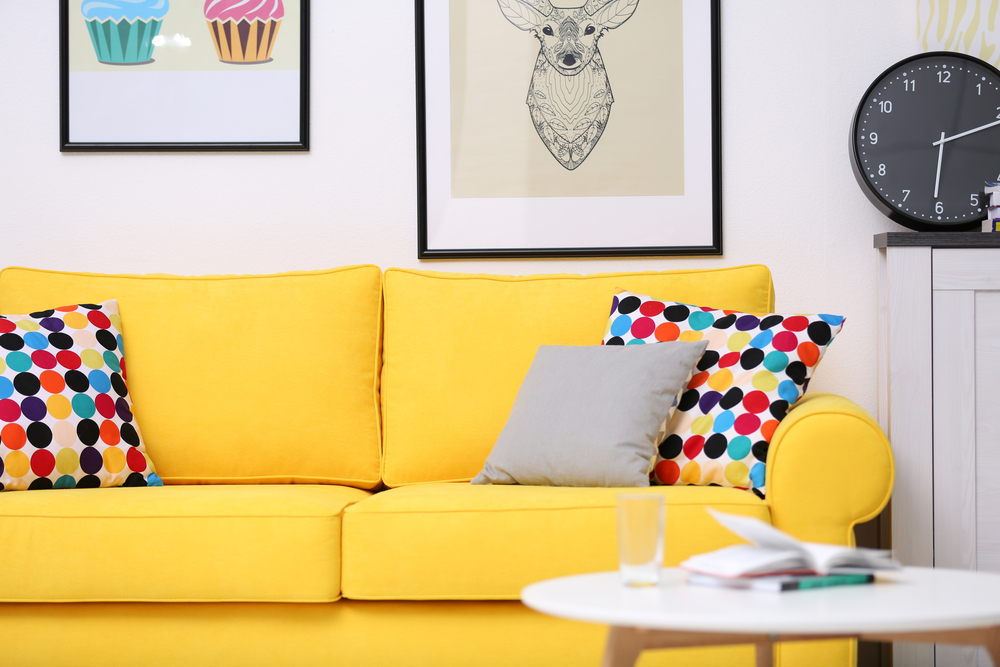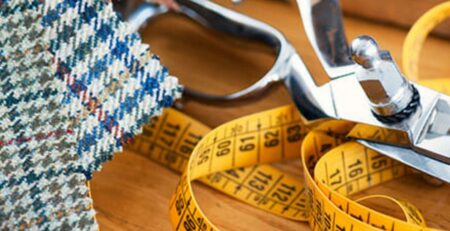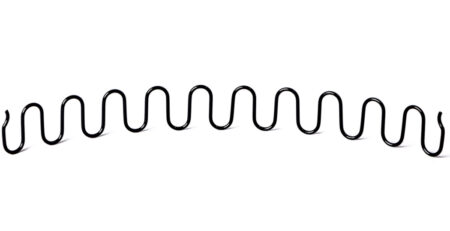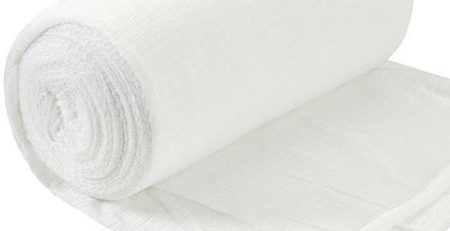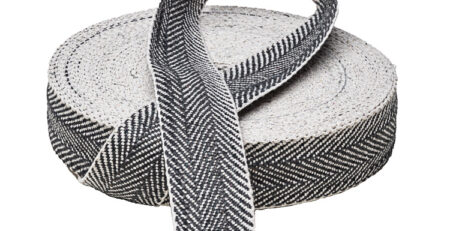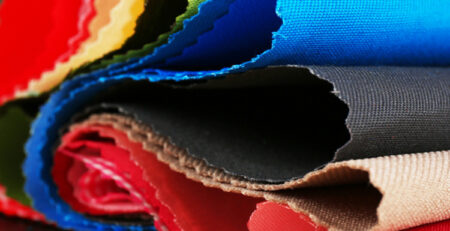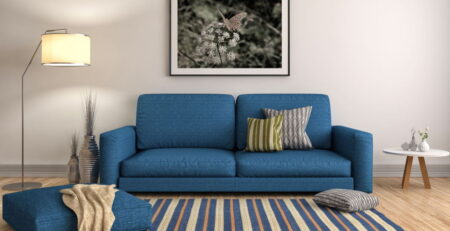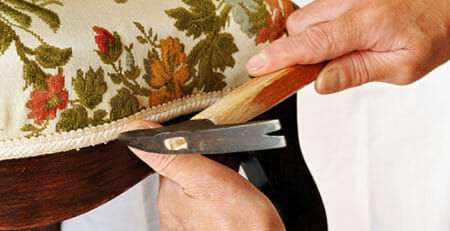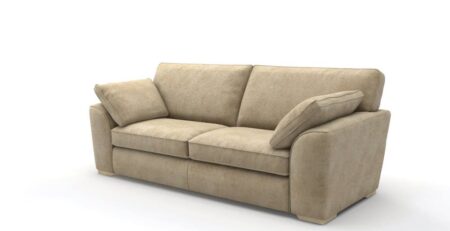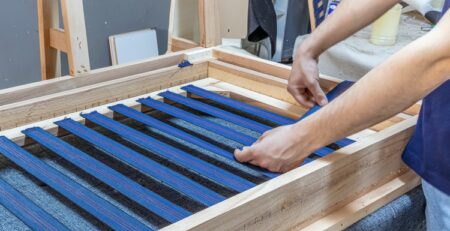How to Choose the Best Upholstery Supplies for Your Project
How to Choose the Best Upholstery Supplies for Your Project
Are you embarking on a new upholstery project and feeling overwhelmed by the task of choosing the right supplies? Look no further! In this article, we will guide you through the process of selecting the best upholstery supplies for your project.
Whether you’re a seasoned professional or a DIY enthusiast, having the right supplies is crucial to achieving a successful and satisfying end result. From fabrics to tools and accessories, every aspect plays a role in creating the perfect upholstery piece.
We understand that the market is flooded with endless options, making it difficult to know where to start. That’s why we’ve done the research for you and compiled a comprehensive guide to help you make informed decisions.
Our expert tips and insights will cover everything from determining the fabric type and color, to choosing the right tools and accessories that will make your upholstery project a breeze.
So, if you’re ready to dive in and choose the best upholstery supplies for your project, let’s get started!
Before we delve into the specifics of choosing upholstery supplies, it’s important to have a basic understanding of what these supplies entail. Upholstery supplies encompass a wide range of materials, tools, and equipment needed to complete an upholstery project.
The main components of upholstery supplies include fabrics, foam, batting, webbing, springs, threads, nails, and various tools such as staple guns, scissors, and hammers. Each of these supplies serves a specific purpose in the upholstery process, and it’s important to choose the right ones for your project.
When selecting upholstery supplies, consider factors such as the type of furniture you’re working on, the desired aesthetic, and the level of durability required. Taking these factors into account will ensure that you choose supplies that not only meet your project’s needs but also align with your personal style and preferences.
Now that you have a general understanding of upholstery supplies, let’s explore the key factors to consider when making your selection. These factors will help you narrow down your options and make informed decisions.
1. Functionality: Consider the purpose of the furniture piece you’re upholstering. Is it a high-traffic area that requires durable and stain-resistant fabrics? Or is it a decorative item that prioritizes aesthetics over functionality? Understanding the intended use of the piece will guide your choice of supplies.
2. Style: Upholstery supplies come in a wide variety of colors, patterns, and textures. Take into account the existing decor and color scheme of the room where the furniture will be placed. Choose fabrics that complement the overall aesthetic and create a cohesive look.
3. Durability: Different upholstery supplies have varying levels of durability. Consider the expected wear and tear the furniture will endure. Opt for high-quality materials that can withstand regular use and maintain their appearance over time.
4. Maintenance: Some fabrics and materials require special care and maintenance. Consider how much time and effort you’re willing to invest in cleaning and upkeep. If you prefer low-maintenance options, choose fabrics that are easy to clean and resistant to stains.
5. Budget: Upholstery supplies can range in price, so it’s important to establish a budget before making any purchasing decisions. Research and compare prices from different suppliers to ensure you’re getting the best value for your money.
By considering these factors, you’ll be able to narrow down your options and choose upholstery supplies that are tailor-made for your project.
One of the most important decisions you’ll make when choosing upholstery supplies is selecting the right fabric. The fabric not only determines the overall look and feel of the furniture but also plays a significant role in its durability and comfort.
When it comes to upholstery fabrics, there are countless options available, each with its own unique characteristics and advantages. Here are some popular types of upholstery fabrics to consider:
1. Natural Fabrics: Natural fabrics such as cotton, linen, and wool offer a classic and timeless appeal. They are breathable, durable, and resistant to pilling. However, they may not be as stain-resistant as synthetic fabrics and may require more frequent cleaning.
2. Synthetic Fabrics: Synthetic fabrics like polyester, nylon, and microfiber are known for their durability, stain resistance, and ease of maintenance. They are often a preferred choice for high-traffic areas or households with children and pets. Synthetic fabrics also offer a wide range of colors and patterns to choose from.
3. Leather: Leather upholstery is a luxurious option that adds sophistication and elegance to any piece of furniture. It is durable, easy to clean, and develops a beautiful patina over time. However, leather can be more expensive and may require regular conditioning to maintain its appearance.
4. Velvet: Velvet fabrics exude opulence and create a luxurious and inviting atmosphere. They are soft, smooth, and offer excellent durability. Velvet upholstery is commonly used for accent chairs, sofas, and headboards, adding a touch of glamour to any space.
5. Outdoor Fabrics: If you’re upholstering furniture for outdoor use, consider outdoor fabrics that are specifically designed to withstand the elements. These fabrics are UV resistant, water repellent, and mold resistant, making them perfect for patio furniture or outdoor cushions.
When choosing upholstery fabrics, consider factors such as comfort, durability, maintenance, and the overall aesthetic you wish to achieve. Don’t be afraid to explore different textures, patterns, and colors to find the perfect fabric for your project.
In addition to the fabric, the foam used in upholstery plays a crucial role in providing comfort and support. The right foam can make a significant difference in the overall feel and longevity of the furniture piece.
When selecting upholstery foam, consider the following factors:
1. Density: Foam density refers to the weight of the foam per cubic foot. Higher density foams are more durable and provide better support. However, they can feel firmer and may not be suitable for all furniture pieces. Lower density foams are softer and more comfortable but may not offer the same level of support.
2. Compression: Compression refers to how much weight is needed to compress the foam by a certain percentage. It indicates the foam’s resilience and ability to bounce back to its original shape. Higher compression foams are more resilient and better suited for high-traffic areas.
3. Thickness: The thickness of the foam should be chosen based on the desired level of comfort and support. Thicker foam provides more cushioning, while thinner foam offers a firmer feel. Consider the seating position and personal preferences when determining the ideal thickness.
4. Quality: Opt for high-quality foam that is durable and long-lasting. Cheaper foam may deteriorate quickly and lose its shape over time. Look for foam that is certified for its quality and longevity.
5. Specialty foams: There are various specialty foams available that cater to specific needs. For example, memory foam molds to the shape of the body, providing excellent support and comfort. Latex foam is natural, hypoallergenic, and resistant to dust mites. Explore these options if you have specific requirements or preferences.
Choosing the right upholstery foam is essential for creating comfortable and long-lasting furniture pieces. Consider the density, compression, thickness, and quality of the foam to ensure the best results.
Apart from fabrics and foam, upholstery projects require a variety of tools and equipment to ensure a smooth and successful process. Having the right tools not only makes the job easier but also leads to professional-looking results.
Here are some essential upholstery tools and equipment to consider:
1. Staple gun: A staple gun is a must-have tool for any upholstery project. It is used to secure the fabric to the furniture frame and ensures a tight and secure fit. Look for a staple gun that is easy to handle and has adjustable settings for different fabric thicknesses.
2. Scissors: Good quality scissors are essential for cutting fabric and trimming excess material. Invest in a pair of sharp, durable scissors that are comfortable to hold and maneuver.
3. Hammer: A hammer is used to secure nails or tacks in upholstery projects. Choose a hammer with a comfortable grip and the right weight for easy and accurate application.
4. Needles and thread: Upholstery needles are longer and stronger than regular sewing needles, making them suitable for heavy-duty fabrics and materials. Heavy-duty thread is also necessary to ensure strong and durable seams.
5. Webbing stretcher: If you’re working on furniture with webbing support, a webbing stretcher is essential for properly tensioning the webbing. It helps to create a firm and supportive base for the cushions and upholstery.
6. Pliers: Pliers are useful for removing staples, nails, or tacks and for manipulating fabric during the upholstery process. Look for pliers with a comfortable grip and a sturdy construction.
7. Sewing machine: While not always necessary, a sewing machine can be a valuable tool for larger upholstery projects or for creating custom cushion covers and draperies. Choose a sewing machine with upholstery-specific features and a variety of stitch options.
Investing in high-quality tools and equipment will make your upholstery project more efficient and professional-looking. Consider the specific requirements of your project and choose tools that will help you achieve the best results.
Now that you have a good understanding of the different upholstery supplies and tools available, the next step is to find reliable suppliers. A reputable supplier can provide high-quality materials, offer expert advice, and ensure a smooth purchasing experience.
Here are some tips for finding reliable upholstery suppliers:
1. Research online: Start by searching for upholstery suppliers in your area or online. Read customer reviews and ratings to gauge the quality of their products and services. Look for suppliers with a good reputation and positive feedback from previous customers.
2. Ask for recommendations: Reach out to friends, family, or colleagues who have recently embarked on upholstery projects. Ask for their recommendations and inquire about their experiences with different suppliers. Personal recommendations can be invaluable in finding trustworthy suppliers.
3. Visit local fabric stores: Local fabric stores often carry a wide range of upholstery supplies and can provide valuable advice and guidance. Visit these stores to browse their selection and speak with knowledgeable staff members who can assist you in making the right choices.
4. Attend trade shows or exhibitions: Trade shows and exhibitions dedicated to upholstery and home decor are great opportunities to discover new suppliers and explore a wide range of products. These events often feature industry experts and allow you to see and feel the materials firsthand.
5. Check for certifications and warranties: Reputable suppliers often provide certifications for their products, ensuring their quality and durability. Additionally, inquire about warranties or return policies in case you encounter any issues with the supplies.
By conducting thorough research, seeking recommendations, and exploring various options, you can find reliable upholstery suppliers that will meet your project’s needs.
Upholstery projects can vary greatly in terms of cost, depending on the size, complexity, and desired materials. It’s important to establish a budget before starting your project to ensure that you can afford the necessary supplies.
Here are some tips for budgeting for upholstery supplies:
1. Research and compare prices: Take the time to research and compare prices from different suppliers. Look for any ongoing promotions or discounts that may help you save money. Be sure to consider the quality and durability of the supplies when comparing prices.
2. Determine the quantity needed: Calculate the amount of fabric, foam, and other supplies required for your project. By knowing the exact quantity, you can obtain accurate price estimates and avoid purchasing excess materials.
3. Consider DIY options: If you’re on a tight budget, consider DIY alternatives for certain supplies. For example, you can make your own cushion covers or repurpose existing materials. However, ensure that DIY options still meet your project’s requirements in terms of quality and durability.
4. Prioritize essential supplies: Identify the essential supplies that are crucial for the success of your project. Allocate a larger portion of your budget to these supplies and consider making compromises on less essential items.
5. Plan for unexpected costs: Upholstery projects can sometimes encounter unforeseen challenges or require additional supplies. Set aside a contingency fund to account for any unexpected expenses that may arise.
By establishing a budget and being mindful of costs, you can ensure that your upholstery project remains within your financial means while still achieving the desired results.
Once you’ve completed your upholstery project, it’s important to properly maintain and care for your supplies to ensure their longevity. Here are some tips for maintaining and caring for upholstery supplies:
1. Follow care instructions: Always refer to the care instructions provided by the manufacturer for each upholstery supply. These instructions outline the recommended cleaning methods, maintenance routines, and any specific precautions to take.
2. Clean regularly: Regular cleaning is essential for maintaining the appearance and condition of upholstery supplies. Vacuum upholstered furniture regularly to remove dust and debris. Spot clean any stains or spills as soon as they occur to prevent permanent damage.
3. Rotate cushions: If you’re upholstering furniture with removable cushions, rotate them regularly to ensure even wear and prevent sagging. Fluff and reshape cushions to maintain their original form and comfort.
4. Protect from sunlight: Direct sunlight can fade and deteriorate upholstery fabrics over time. Use curtains, blinds, or UV-protective films to shield your furniture from excessive sunlight exposure. Alternatively, consider using fade-resistant fabrics for upholstery projects in rooms with ample sunlight.
5. Address issues promptly: If you notice any signs of wear, tear, or damage to your upholstery supplies, address them promptly. Repair loose seams, replace worn-out foam, or patch any holes or tears to prevent further deterioration.
By following these tips, you can extend the lifespan of your upholstery supplies and keep them looking their best for years to come.
As with any project, there are common mistakes that can be made when choosing upholstery supplies. By being aware of these mistakes, you can avoid costly errors and ensure a successful outcome. Here are some common mistakes to avoid:
1. Compromising on quality: It can be tempting to choose cheaper supplies to save money, but compromising on quality can lead to unsatisfactory results. Investing in high-quality materials and tools will pay off in the long run, leading to durable and visually appealing furniture pieces.
2. Neglecting functionality: While aesthetics are important, it’s crucial not to overlook the functionality of your upholstery supplies. Ensure that
When it comes to choosing upholstery supplies, there are a few common mistakes that people often make. By being aware of these mistakes, you can avoid them and ensure that you make the best choices for your project.
Mistake 1: Not Considering the Fabric Type and Colour
One of the biggest mistakes people make when choosing upholstery supplies is not considering the fabric type and colour. The fabric you choose will not only affect the overall look and feel of your upholstery piece but also its durability and maintenance requirements.
When selecting the fabric type, consider factors such as the intended use of the furniture, the level of durability required, and the amount of care and maintenance you are willing to invest. For example, if you have pets or young children, you may want to opt for a fabric that is stain-resistant and easy to clean.
In addition to the fabric type, the colour of the upholstery fabric is also an important consideration. Think about the colour scheme of the room where the upholstery piece will be placed and choose a colour that complements or adds to the overall aesthetic.
Mistake 2: Compromising on Quality
Another mistake to avoid is compromising on the quality of the upholstery supplies. While it may be tempting to choose cheaper options, especially if you’re on a tight budget, investing in high-quality supplies will pay off in the long run.
High-quality fabrics, tools, and accessories not only ensure a better end result but also offer superior durability and longevity. They are less likely to wear and tear or show signs of age and provide a more professional and polished look to your upholstery project.
When it comes to upholstery fabrics, look for reputable brands known for their quality materials. For tools and accessories, opt for those made from durable materials that can withstand the demands of the upholstery process.
Mistake 3: Not Considering the Project Scope
One more mistake to avoid is not considering the scope of your upholstery project. The supplies you choose should be suitable for the specific project you’re working on.
For example, if you’re reupholstering a small chair, you may not need large quantities of fabric or heavy-duty tools. On the other hand, if you’re working on a larger piece of furniture or multiple pieces, you’ll need to ensure you have enough fabric and the right tools to complete the job.
Before purchasing supplies, take the time to assess the scale and complexity of your project. Consider factors such as the size of the furniture, the intricacy of the upholstery work required, and any additional materials or accessories that may be needed.
By avoiding these common mistakes, you can make more informed decisions when choosing upholstery supplies and ensure the success of your project.


